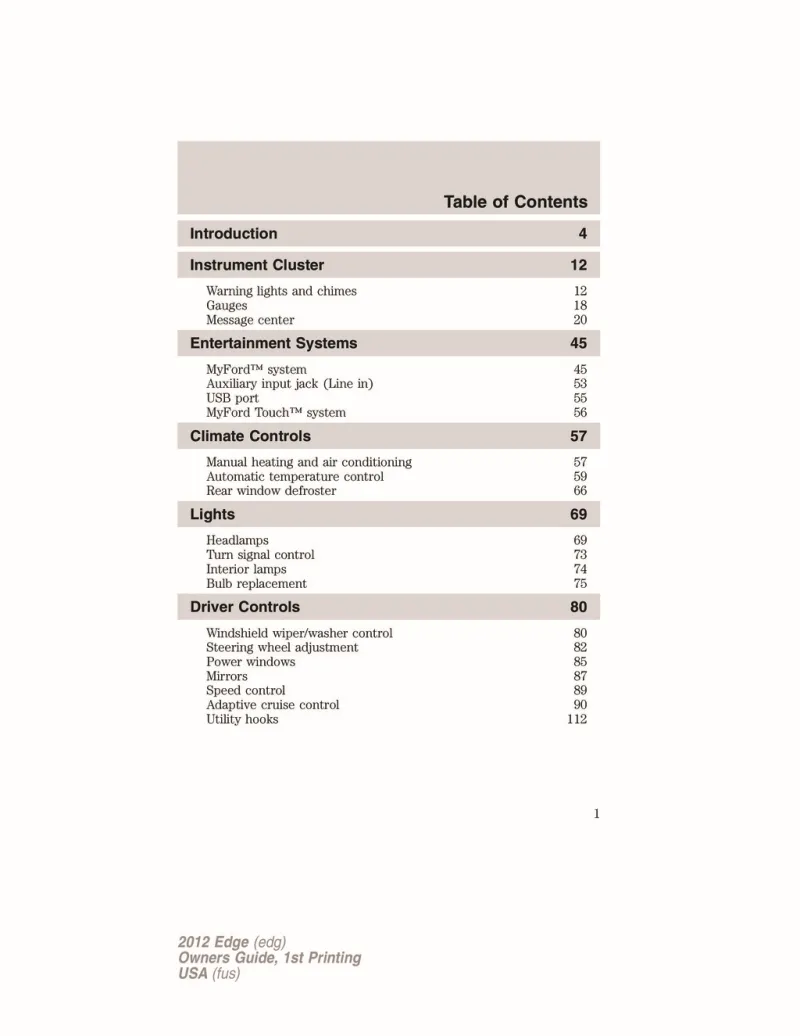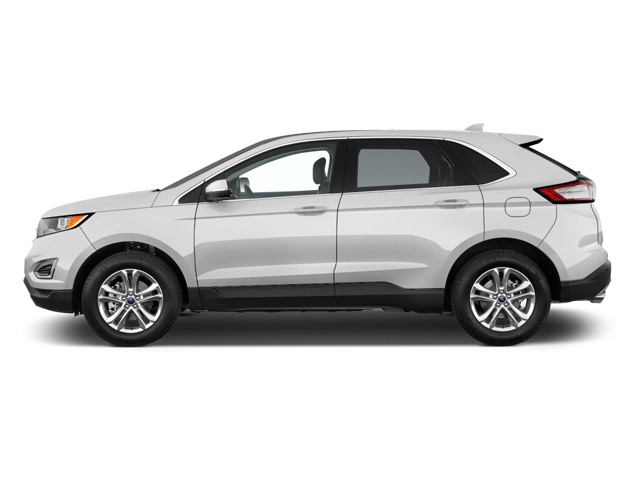2012 Ford Edge Owner's Manual

Table of Contents
2012 Ford Edge Overview
Introduction
The 2012 Ford Edge stands as a versatile midsize crossover SUV, blending style, comfort, and advanced technology. With a bold design, spacious interior, and ample cargo space, the Edge is an ideal choice for families and adventure seekers alike. This model year marks a continuation of its popularity, offering impressive performance backed by a suite of modern features tailored for convenience and safety.
Powertrains
The 2012 Ford Edge comes equipped with two distinct powertrains to suit varying driving preferences. The base model features a robust 3.5-liter V6 engine, delivering 285 horsepower and 253 lb-ft of torque. An optional 2.7-liter EcoBoost V6 engine is also available for those seeking enhanced performance and efficiency, offering 320 horsepower and improved fuel economy. Both engines are mated to a six-speed automatic transmission and are available with either front-wheel drive or all-wheel drive, providing flexibility on all types of terrain.
Trims
The Edge lineup for 2012 offers multiple trims to cater to diverse tastes and budgets, including the SE, SEL, Limited, and Sport. The SE serves as the base model with standard features, while the SEL offers more luxury and comfort options. The Limited trim elevates the experience with premium materials and advanced technology, and the Sport trim integrates a sport-tuned suspension for a more dynamic driving experience.
Features
Inside the 2012 Ford Edge, drivers and passengers alike will find a wealth of cutting-edge features, including Ford's SYNC system for seamless connectivity, available navigation, and a premium sound system. Additionally, ample cargo space, heated front seats, and advanced safety features such as rear parking sensors and a rearview camera make every journey enjoyable and secure.
Owner's Manual
The owner's manual for the 2012 Ford Edge provides comprehensive guidance on operating and maintaining the vehicle. It includes details on recommended service intervals, troubleshooting tips, and thorough explanations of the various features. This essential resource empowers owners to maximize their driving experience while ensuring the longevity and reliability of their Ford Edge.
User manual download
The Ford Edge owner manual for the 2012 model year is to be found in PDF downloadable format on this page. The owner manual for the model year 2012 is free and in English, but the repair manuals are usually not easy to get and may cost more.
Manual Questions
Fill the form below and someone will help you!

